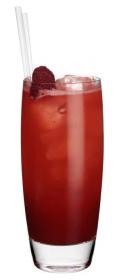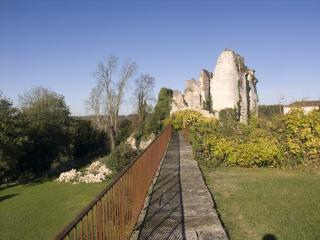Basque in Glory: the Gascon south west
POSTED ON 19/06/2009A fortnight ago, I looked at the Quercy side of south-west France. This week it's the turn of Gascony, stretching west from Toulouse to the Atlantic and the Pyrenees. Gascony is home to the dark, tannat-based reds of Madiran, Saint Mont and, nestling in the Pyrenean foothills, the independent-minded Basque sub-region of Irouléguy. So goodbye for now to the malbec of Cahors and hello fer servadou – known as pinenc in Saint Mont – and the dark reds made from tannat grape, the variety found by Dr Roger Corder to be the richest in the anti-oxidant chemical procyanadin.
Liquid Assets: summer cocktails
POSTED ON 12/06/2009From drinks inspired by Slumdog Millionaire to elegant and classic combinations, there's a cocktail to quench every thirst this summer...
1. Raspberry Collins
Squeeze and drop three lemon wedges into a cocktail shaker, add 15ml sugar syrup, 25ml of raspberry purée, 60ml of a good gin and top up with cubed ice; give the whole thing a big shake and strain into a Collins glass (a tall tumbler). Top up with soda and garnish with a lemon wedge and a couple of fresh raspberries.
 Raspberry Collins
Raspberry Collins
Cahors Blimey - France's South West part 1
POSTED ON 05/06/2009If the South of France has become known as the new New World of wine, the South West is its new old world. From the sunny foothills of the Pyrenees through Toulouse across to the spine of the Massif Central, the South West is a sprawling, diverse wine region on the brink of rediscovery. Bisected by the Garonne River, the Quercy side fans out east of Toulouse past gluggy Fronton to the long-lived wines of Cahors and sprightly Gaillacs and includes some of France’s most obscure appellations, among them Marcillac, Estaing and Entraygues et Le Fel.
Heart of Glass
POSTED ON 29/05/2009Since our politicians have shown themselves to have all the moral backbone of a smack of jellyfish, it leaves something of a bitter taste in the mouth to have to listen to the nanny state’s killjoy cant about alcohol. Drinking wine is bad, so the mantra goes, because it causes cyrrhosis, it’s anti-social and brings death and destruction on the roads. Well, yes, it’s obvious to anyone with quarter of a brain that excessive drinking, whether of wine, beer or spirits, is harmful.
Big Country - France's Vins de Pays
POSTED ON 15/05/2009In its desperate need to stem the encroaching New World tide, the annual Top 100 competition for France’s vins de pays has shown a way of spotlighting good wines and value in an area that can be tough for consumers to get a handle on. Unlike the big New World brands, whose easy virtues make life easy for wine drinkers, French wines tend to rely heavily on the appellations as substitutes for brands. The trouble is that appellations are designations or origin, not quality, and most, like Bordeaux or Côtes du Rhône, are just too big and sprawling to be meaningful.
In the Pink
POSTED ON 08/05/2009I knew that rosé had finally arrived during the long, hot summer of 2003, as my overheated car and I limped wearily into Bordeaux.
 In the Pink © Ed Nix
In the Pink © Ed Nix
On every table of every bar and café I saw stood a bottle of Bordeaux rosé in an ice bucket. In an instant the world's biggest red wine region seemed to be quenching its thirst with pink as if there were no other colour. Since that torrid summer, rosé wines have taken off like a rocket and never looked back. There are good reasons why pink is the new black.
Spanish Steppes - Rueda's Whites
POSTED ON 24/04/2009Like airline food and friendly fire, the word great coupled with Spanish white wine has long been one of life’s more amusing oxymorons, albeit not to the Spanish. But the virtues of Galicia’s albariño, with its wonderful pure fruit and fresh acidity, showed how it was the perfect accompaniment to the cornucopia of wine-friendly Atlantic coast seafood. Given a kick up the backside by Galicia, Rioja started to make something of its own hitherto somewhat neutral viura grape.
Que Syrah, Syrah - Chilean syrah
POSTED ON 17/04/2009The last time I saw Alvaro Espinoza, Chile’s leading organic winemaker landed me in a mountain of steaming dung on the estate where he makes Emiliana’s wines in Chile’s Colchagua Valley. I can’t imagine it was on purpose because his four-wheel drive had to be pulled out by a tractor. I wondered if Charles and Camilla might suffer a similar fate when they stepped on Viñedos Emiliana Organicos’ sod (the vineyard, that is) in Casablanca recently. No such luck.



